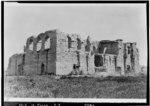Pueblo High School (Tucson)
1956 establishments in ArizonaEducational institutions established in 1956Magnet schools in ArizonaPublic high schools in ArizonaSchools in Tucson, Arizona
Pueblo High School is a high school serving Tucson, Arizona since 1956. It is a school in the Tucson Unified School District, the largest school district in Tucson. Pueblo is the only high school in Tucson that owns a radio station, KWXL-LP.
Excerpt from the Wikipedia article Pueblo High School (Tucson) (License: CC BY-SA 3.0, Authors).Pueblo High School (Tucson)
South 12th Avenue, Tucson
Geographical coordinates (GPS) Address External links Nearby Places Show on map
Geographical coordinates (GPS)
| Latitude | Longitude |
|---|---|
| N 32.184166666667 ° | E -110.98083333333 ° |
Address
Pueblo High Magnet School
South 12th Avenue
85713 Tucson
Arizona, United States
Open on Google Maps







